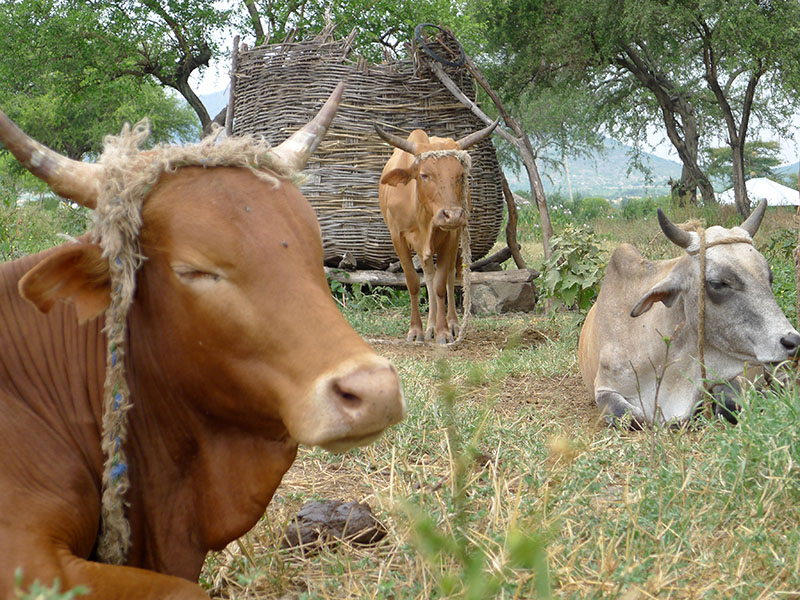
Livestock can act as a potential pathway out of poverty for rural producers and other actors throughout the value chain, but it is dependent on market access. There has been a long history of successful export of non-livestock products from African countries to wealthier countries (particularly vegetables and flowers from East Africa), but there are relatively few examples of African countries exporting livestock products to more lucrative developed country markets.
The Natural Resources Institute (NRI) has been commissioned by the UK Department for International Development (DFID) to evaluate the potential of Commodity-Based Trade (CBT) to enable more resource poor farmers in developing countries to enter the global trade in meat and livestock products.
A case study in the Caprivi region of Namibia revealed that wider acceptance of CBT would determine substantial trade diversion towards markets where higher prices for specific meat cuts can be obtained (EU and South Africa), but that the costs need to be carefully understood because they may out-weigh the benefits.
An important reason for limited access to livestock export markets is the presence of a range of transboundary animal diseases (TADs) in Africa such as foot-and-mouth disease (FMD) that pose risks to animal and human health. The presence of TADs makes compliance with sanitary and phytosanitary (SPS) standards, which regulate international trade in agricultural products, difficult, if not impossible.
The international standard setting body World Organisation for Animal Health (OIE) has developed formal mechanisms for recognising the freedom of countries, or zones within countries, from the four TADs that represent the major threat to international trade. However, in many African countries eradication of these diseases is not technically or economically feasible, relegating farmers in endemic zones to informal markets.
Commodity-Based Trade (CBT) may offer a solution for overcoming these obstacles and could open up new markets currently denied to African livestock producers. This regulatory innovation, rather than focusing on the animal health status of the country or zone of origin, focuses on the process in which meat is produced and the measures taken to ensure that the risk of spreading TADs is minimal to negligible.
The concept of CBT is not new and is being progressively applied by the OIE (e.g., for trade in hides, skins and corned beef). Recently the OIE has developed a standard for the safe import of de-boned beef from an FMD infected country or zone, but still many importing countries consider geographical freedom from TADs as a prerequisite for safe import of fresh meat.
The Caprivi region case study (where FMD is endemic) confirms that access to western markets would require a holistic approach that takes into account both compliance with a wide range of sanitary standards and meeting the expectations of consumers and retailers in terms of quality. However the benefits would be offset as this can be extremely costly, and under certain conditions, can make this option less attractive than targeting regional markets within Africa.
The results are therefore mixed, but we hope that by applying empirical methods to the analysis, decision makers will have a new tool to allow them to test each livestock market access case on its merits.
Our work has been discussed with the Working Group of the Standard and Trade Development Facility (STDF) at the WTO headquarters in Geneva, and then disseminated in workshops held at the International Livestock Research Institute in Nairobi (ILRI), at the Common Market for Eastern and Southern Africa in Lusaka (COMESA) and at the Meat Board of Namibia in Windhoek. A paper was also presented at the 130th Seminar of the European Association of Agricultural Economics (EAAE) in September 2012.
Diego Naziri

